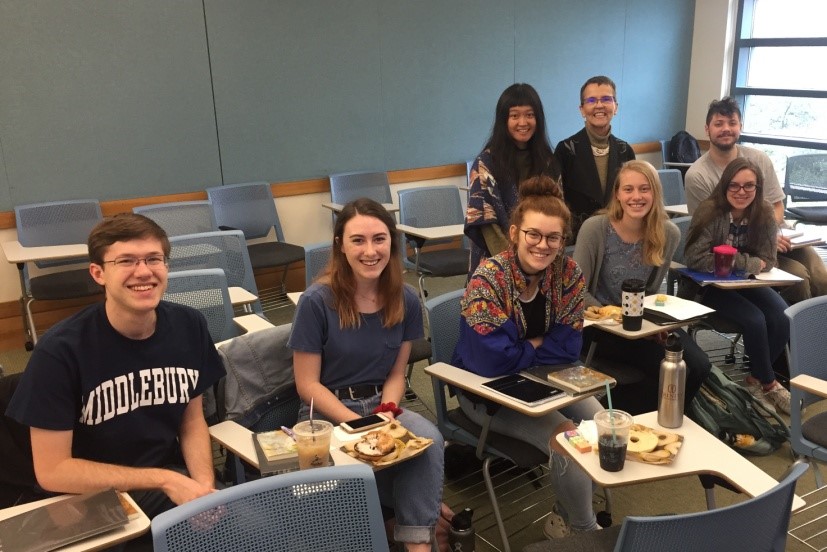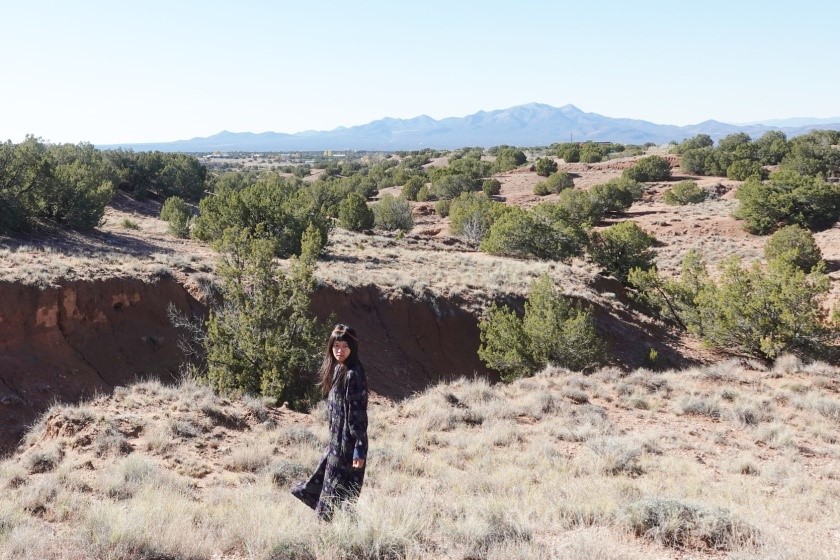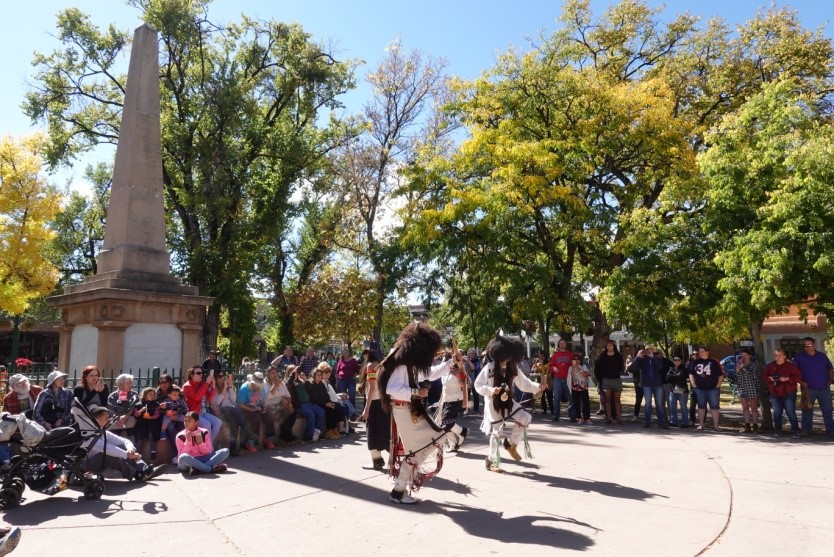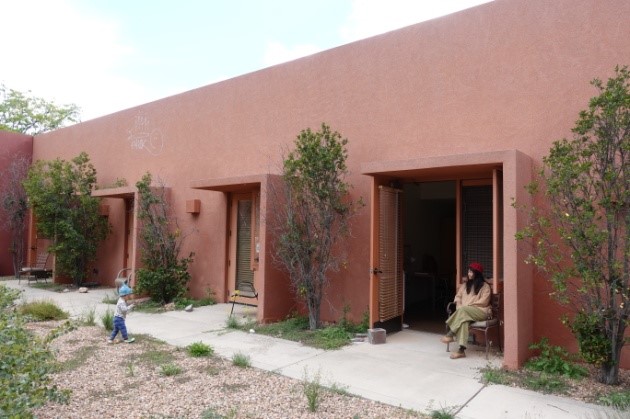Artists
Photo Credit: NIU Chun-Chiang
Yu-Hsuan (Frida) WU
Yu-Hsuan (Frida) WU
| Location | USA / Santa Fe |
|---|---|
| Residency | Santa Fe Art Institute (SFAI) |
| Year of the Grant | 2018 |
| Personal Website | Yu-Hsuan (Frida) WU's Personal Website |
Published a poetry collection Exchanging Lovers’ Ribs and an essay collection on cinema, Decaying Anywhere: 99 Love Letters from a Movie Fan.
Artist’s Residency Experience:
Before I left New Mexico, I returned to Ghost Ranch to look at winter snow harboring in the wrinkles of red rocks. The boundless desert was so vast that it lost track of the life and death happening on each inch square. I knew it’d own me the first time I laid my eyes on the desert. The normality of daily lives no longer be. I could be reattached to the desert, its depth and wholeness, in a split second, so quickly and tightly. I did not come here to write; I simply wanted to live where no willpower of anyone could interfere with the landscape. I waited for the meanings of each word I know to dissipate; I waited until beauty, harmony, and terror came and went.
Came and went. I could be further dissembled, broken into even smaller pieces so that I could live in a vacant space between the sky and the land. I could explore the conditions of such a dwelling - and that was my motivation for the residency. I intended to explore new forms of awareness and nomenclature when you have nothing and rely on nothing. During my residency in New Mexico, I lived in the city of Santa Fe, whose name originated from Spanish, meaning “holy faith.” To me, “holy faith” means emptying myself to be merged into a whole, to live in a higher power, and to reconfigure the meanings of freedom and limitation. This is the common thread of rituals of beliefs and writing/creating: guarding the connection between ourselves and the world, and not resorting to the certainty of words, so haphazardly, to shield us from the ever-changing and mysterious world.
I arrived at Santa Fe in early September, when four seasons would occur on the same day. I left at the end of November when ice and snow cover everything. Attempting to catch up with the changes and mystery, I purchased a second-hand car across the street of Santa Fe Art Institute (SFAI), where my residency took place, as soon as I landed. The color of the vehicle was sunburst, just like a prophecy for my life in the strange land. The light that burst through me, as it turned out, was from the artists from around the world. A writer from Israel, a film director from Columbia, a painter from Canada, an editor from France, a performance artist from Thailand, and a human right activist of native American descent......Our rooms and studios were adjacent with one another’s, and we shared the kitchen for three meals a day, so we always chatted in the living room and in the courtyard beneath a tree. We discussed our cultural upbringing, identity, and struggles in our work.
SFAI chooses a residency topic each year, which often is critical issues faced by the international community, such as food justice, immigration, and water rights. The subject for 2018 was Truth and Reconciliation. Although my application, submitted via the Ministry of Culture in Taiwan, is not required to fit the topic, I still included my explorations on Truth and Reconciliation and how the content and format of my work respond to the subject in it. “Responding” motivates my work. It is a form of conversation that is conceivable, that could be layered, for the world as I see it.
SFAI values exchanges across all fields and social participation. It hosts private Showcase events each month, where artists-in-residence share their experience and progress in creating art. It organizes multiple Artist Talks for the public, shaping the thoughts and actions of people in society. Each quarter, SFAI also holds a major event, SFAI 140, where artists-in-residence and professionals of various background, including curators, university professors, founders of startup hubs, directors of community development associations, researchers at art foundations...etc., talk or perform for 140 seconds each. Besides the formal events, artists-in-residence would post our spontaneous invitations on the living room wall, hosting potlucks, holiday celebrations, going to the hot springs, musical concerts, or film festivals......
The perception of time and the reflective perspectives towards life in a strange land are valuable to my residency experience. In sunny, warmer days, I went hiking, visited Native American tribes, and witnessed the bizarre landscape sculpted by wind erosion. I tumbled through the white sand in the desert, past the rock layers carved by glaciers, and walked into every scene of Georgia O’Keeffe’s paintings; I sat at the Santa Fe Plaza, writing poems for strangers. In cold, snowy days, I visited museums. A New Mexico Culture Pass costs only 30 dollars, and grants access to the Museum of International Folk Art and Museum of Indian Arts & Culture at Museum Hill, New Mexico Museum of Art and New Mexico History Museum near Santa Fe Plaza, as well as the tribes and historic sites of the Hispanic Colonial period.
I am the most impressed with the Black Place in O’Keeffe paintings. It is approximately 150 miles northwest of Ghost Ranch, in the Navajo country, where locals call Bisti Badlands. Black and grey lava hills lump next to one another, with thick wrinkles, like a herd of crouching elephants. A deserted land that no one asks about gives rise to life and beauty of art that is beyond words. Taos, where tourists flood to, is beyond comparison with Coronado Historic Site, where people seldom visit, where you could go look at the fading murals underground - I learned that, clearly, the meaning of being human is not about what one obtains, but about what one desires to obtain. Guarding the relics were the Sandia Mountains and Rio Grande, which the Native Americans and Spanish colonists must have gazed at every day.
On the night before I set out for Santa Fe, I realized that the author of a book that I hold dearly by my bedside, Lost Borders, spent her late years in Santa Fe. Mary Hunter Austin advocated for Native Americans, hail for environmental protection, and founded the Santa Fe Little Theatre. There were two local diners I frequented; one is by the Turquoise Trail. I nicknamed the other, Sweetwater Harvest Kitchen, as Agua Dulce because Mary Hunter Austin wrote: “It was a sort of pretty place at Agua Dulce. The spring came out from the black rock into a basin with a gurgly sound. There was a pink flowering bush behind it, and a smitch of green where it ran over to the sand . . .There were doves came and built in the flowering shrubs, for they hadn’t fear of man . . .”,Ancient men once crawled out of a land that had nothing, before disappearing in the desert, again. As I draw closer to the desert, to creating and writing, I am approaching a land of lost borders, filled with love. I can do nothing but accept that, when I attempt to describe the desert, my throat becomes dry and coarse, because there is no water left. The sand and dust of words have, even, concealed where water once was.



